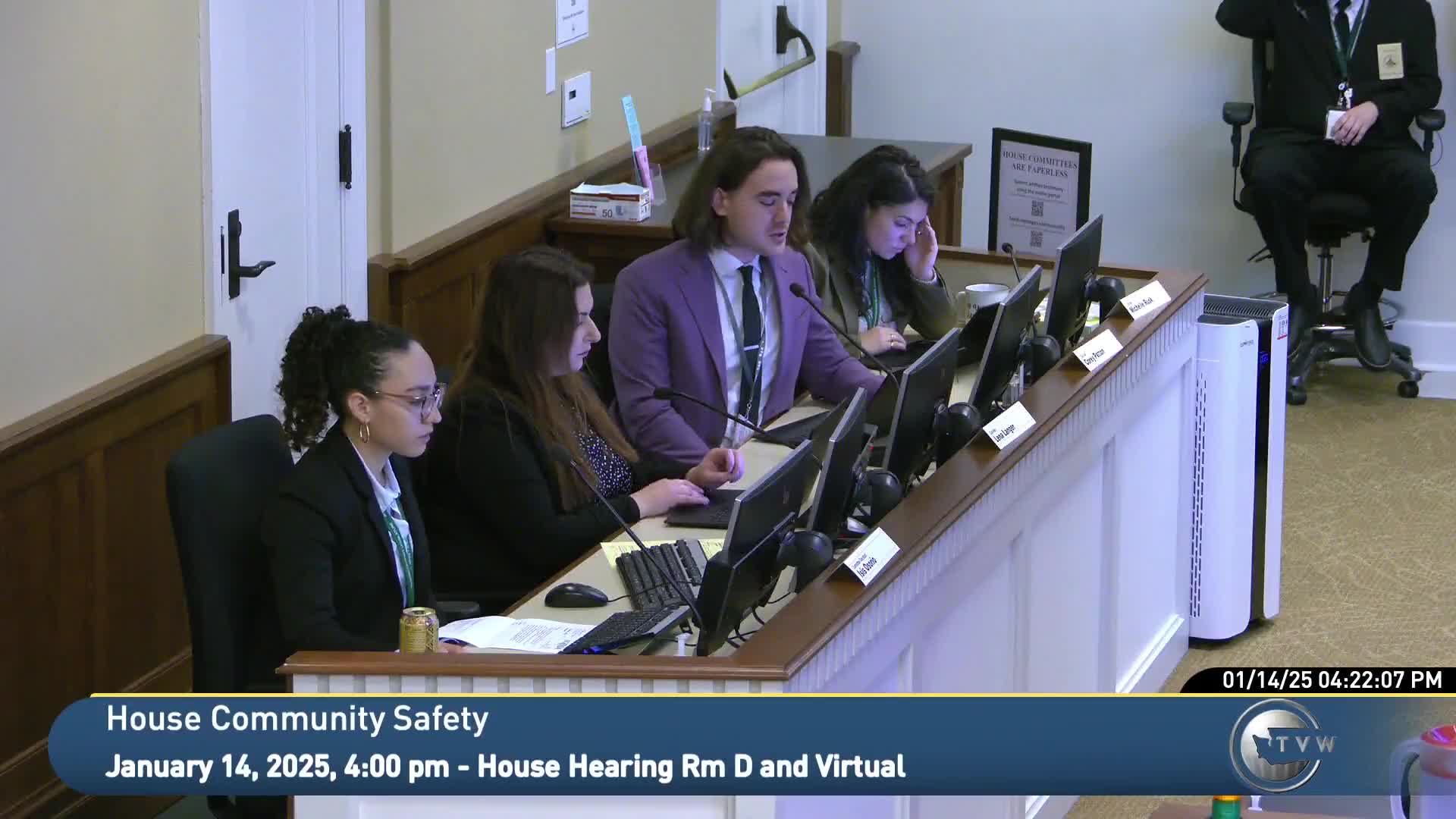JLARC finds public-utility tax credit for home energy assistance unlikely to drive more assistance; Commerce recommends termination
January 14, 2025 | Community Safety, Justice, & Reentry, House of Representatives, Legislative Sessions, Washington
This article was created by AI summarizing key points discussed. AI makes mistakes, so for full details and context, please refer to the video of the full meeting. Please report any errors so we can fix them. Report an error »

Pete Van Moorsil, staff to the Joint Legislative Audit and Review Committee, presented JLARC’s 2024 review of the public-utility tax credit for home energy assistance at the House Finance Committee meeting on Jan. 14. The credit reimburses up to 50% of energy assistance utilities provide to low-income customers, is capped at $2,500,000 per year statewide, and is allocated by the Department of Revenue to about 60 utilities in proportion to the federal LIHEAP dollars their customers receive.
JLARC found that utilities increased energy-assistance spending statewide—rising about 42% from 2018 to 2023, from $53.6 million to $76.1 million—but the tax credit reimburses a small and declining share of that assistance (about 4.7% in 2018 to 3.3% in 2023) because the credit’s $2.5 million cap is fixed. About 30 utilities claim the credit each year; the allocation is concentrated (seven utilities received about $1.9 million, or 78% of the cap). Many smaller utilities receive allocations so small (single- or double-digit-dollar amounts) that claiming the credit would likely cost more in staff time than the benefit.
JLARC concluded that the credit likely does not incentivize utilities to provide more energy assistance. Statutory changes since the credit’s enactment have also affected outcomes: the Clean Energy Transformation Act (CETA) and later statutes (including a 2021 Senate bill requiring investor-owned utilities to offer low-income discounts with cost recovery options) now require or expand low-income programs. The Department of Commerce, which administers federal energy assistance at the state level, recommended terminating the credit, citing statutory changes and noting the credit is not widely used and is not material for most utilities. JLARC recommended that if the Legislature wishes to encourage utilities to expand assistance, it should state clear policy objectives and performance metrics and consult the Department of Commerce to identify changes that would better achieve those goals.
Committee members asked JLARC whether the review examined households eligible for assistance but not receiving it; JLARC said Commerce’s energy assistance reports examine that topic by county, but JLARC could not match preference claims directly to specific households. JLARC also explained the allocation methodology and why very small utilities receive de minimis allocations under the existing formula.
JLARC presented these findings to inform potential bills in the 2025 session; no formal action was taken by the committee during the hearing.
JLARC found that utilities increased energy-assistance spending statewide—rising about 42% from 2018 to 2023, from $53.6 million to $76.1 million—but the tax credit reimburses a small and declining share of that assistance (about 4.7% in 2018 to 3.3% in 2023) because the credit’s $2.5 million cap is fixed. About 30 utilities claim the credit each year; the allocation is concentrated (seven utilities received about $1.9 million, or 78% of the cap). Many smaller utilities receive allocations so small (single- or double-digit-dollar amounts) that claiming the credit would likely cost more in staff time than the benefit.
JLARC concluded that the credit likely does not incentivize utilities to provide more energy assistance. Statutory changes since the credit’s enactment have also affected outcomes: the Clean Energy Transformation Act (CETA) and later statutes (including a 2021 Senate bill requiring investor-owned utilities to offer low-income discounts with cost recovery options) now require or expand low-income programs. The Department of Commerce, which administers federal energy assistance at the state level, recommended terminating the credit, citing statutory changes and noting the credit is not widely used and is not material for most utilities. JLARC recommended that if the Legislature wishes to encourage utilities to expand assistance, it should state clear policy objectives and performance metrics and consult the Department of Commerce to identify changes that would better achieve those goals.
Committee members asked JLARC whether the review examined households eligible for assistance but not receiving it; JLARC said Commerce’s energy assistance reports examine that topic by county, but JLARC could not match preference claims directly to specific households. JLARC also explained the allocation methodology and why very small utilities receive de minimis allocations under the existing formula.
JLARC presented these findings to inform potential bills in the 2025 session; no formal action was taken by the committee during the hearing.
View full meeting
This article is based on a recent meeting—watch the full video and explore the complete transcript for deeper insights into the discussion.
View full meeting
